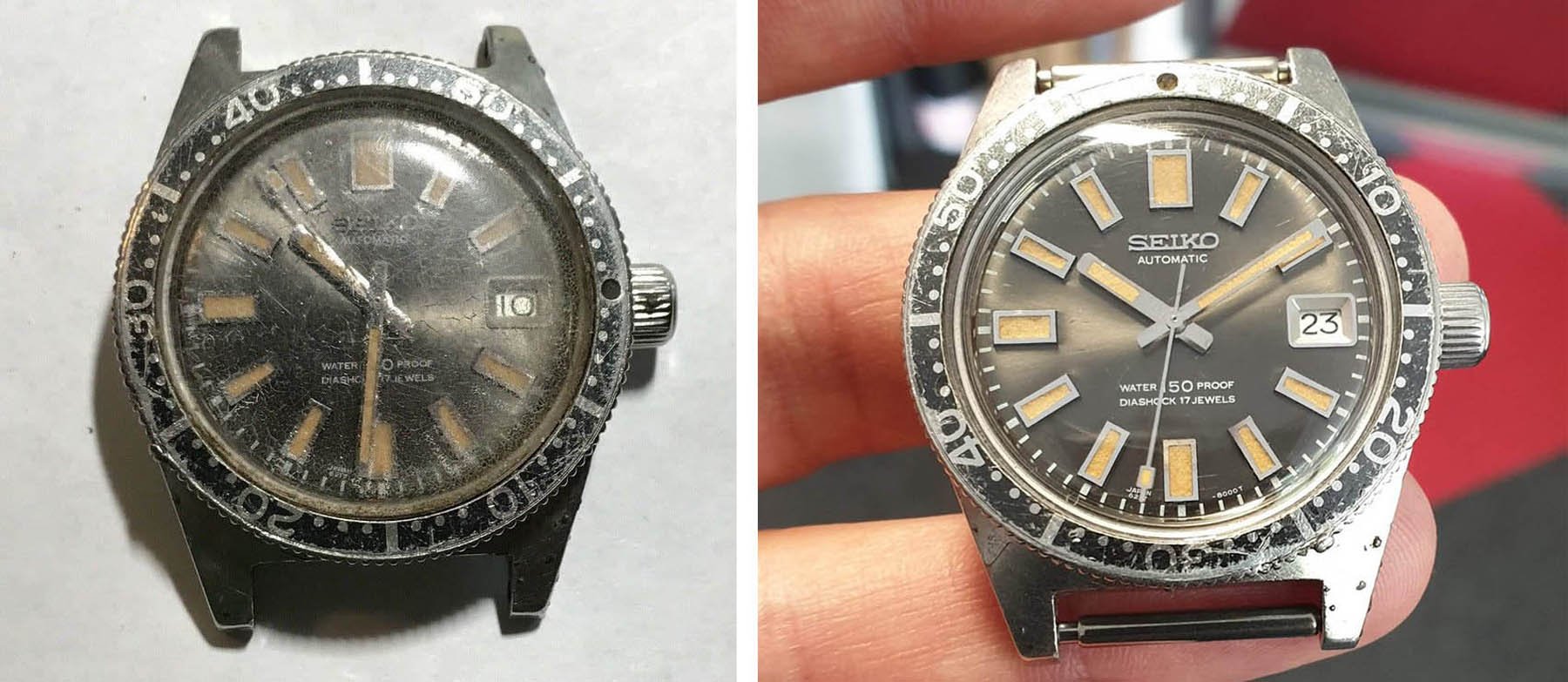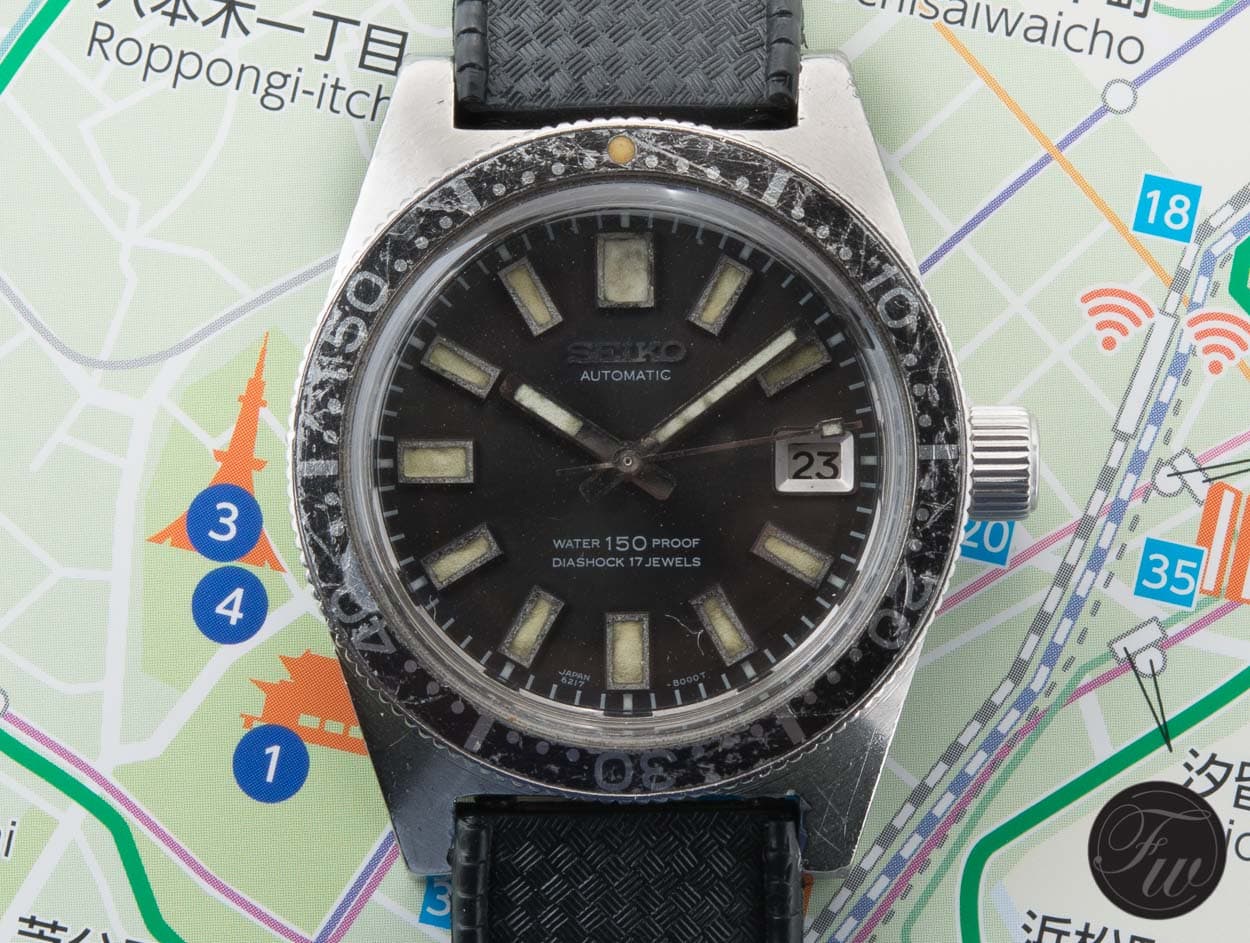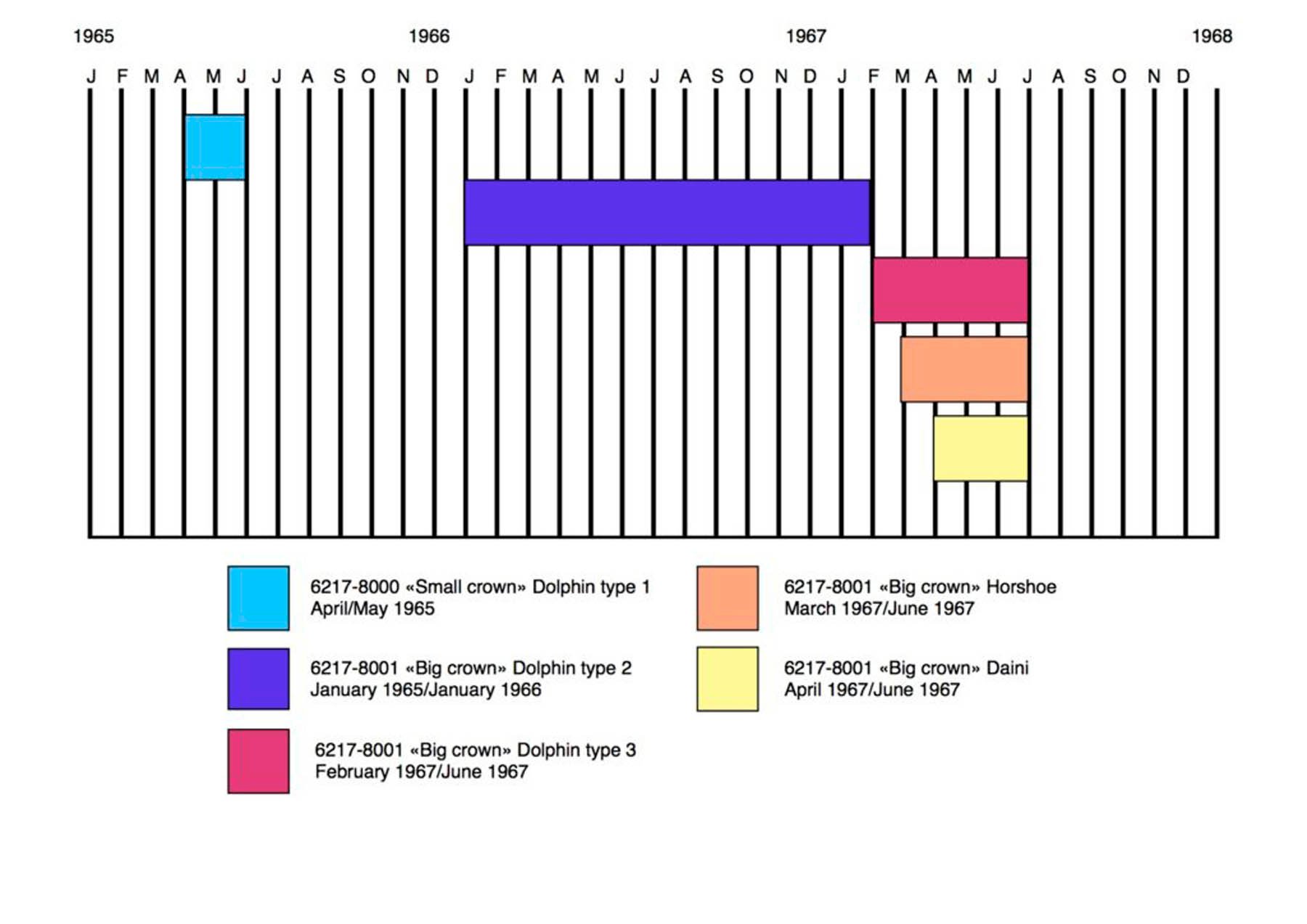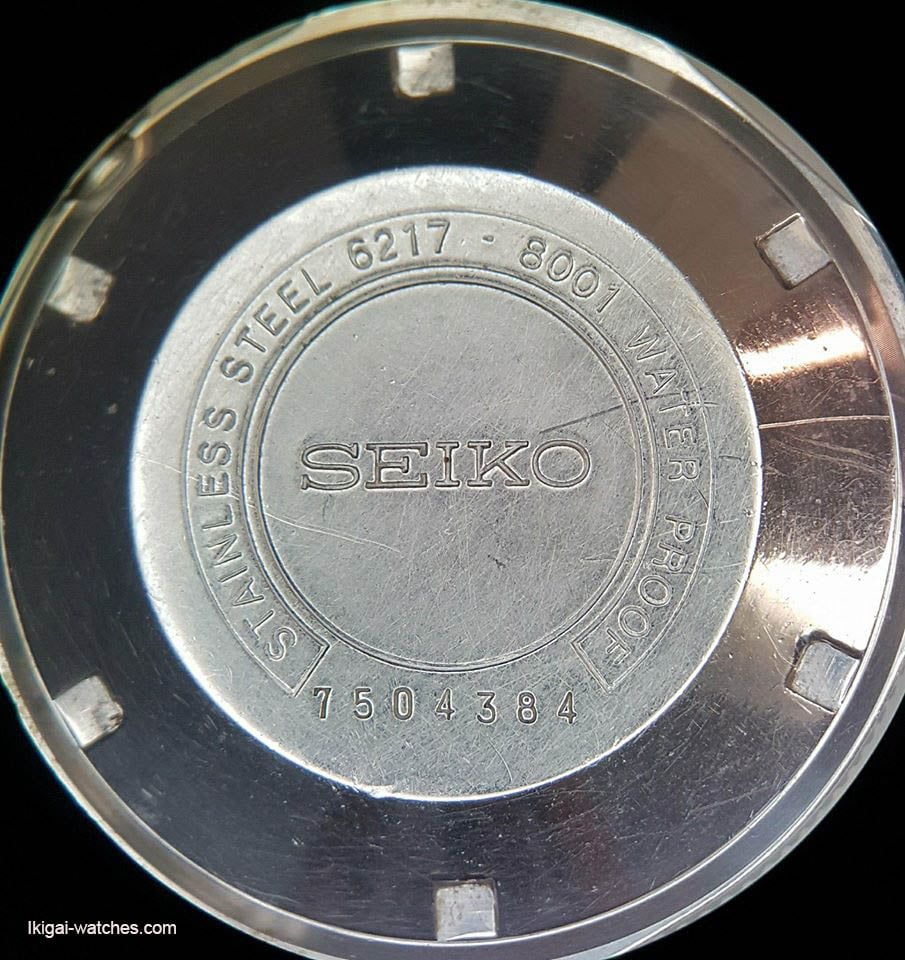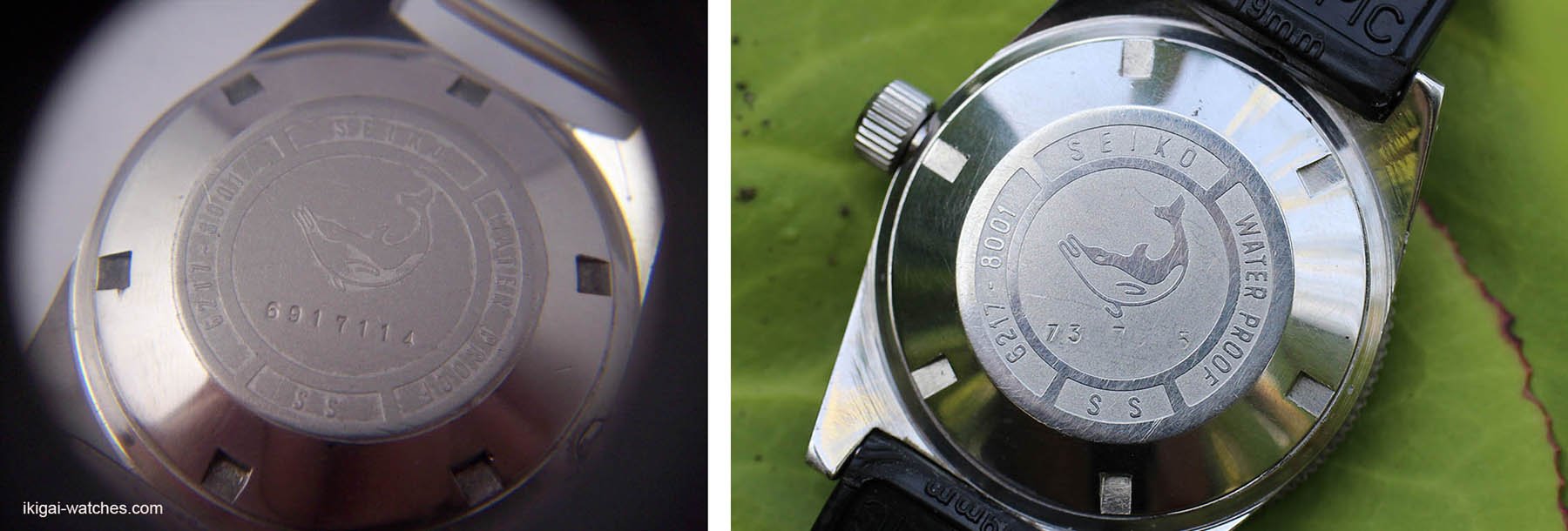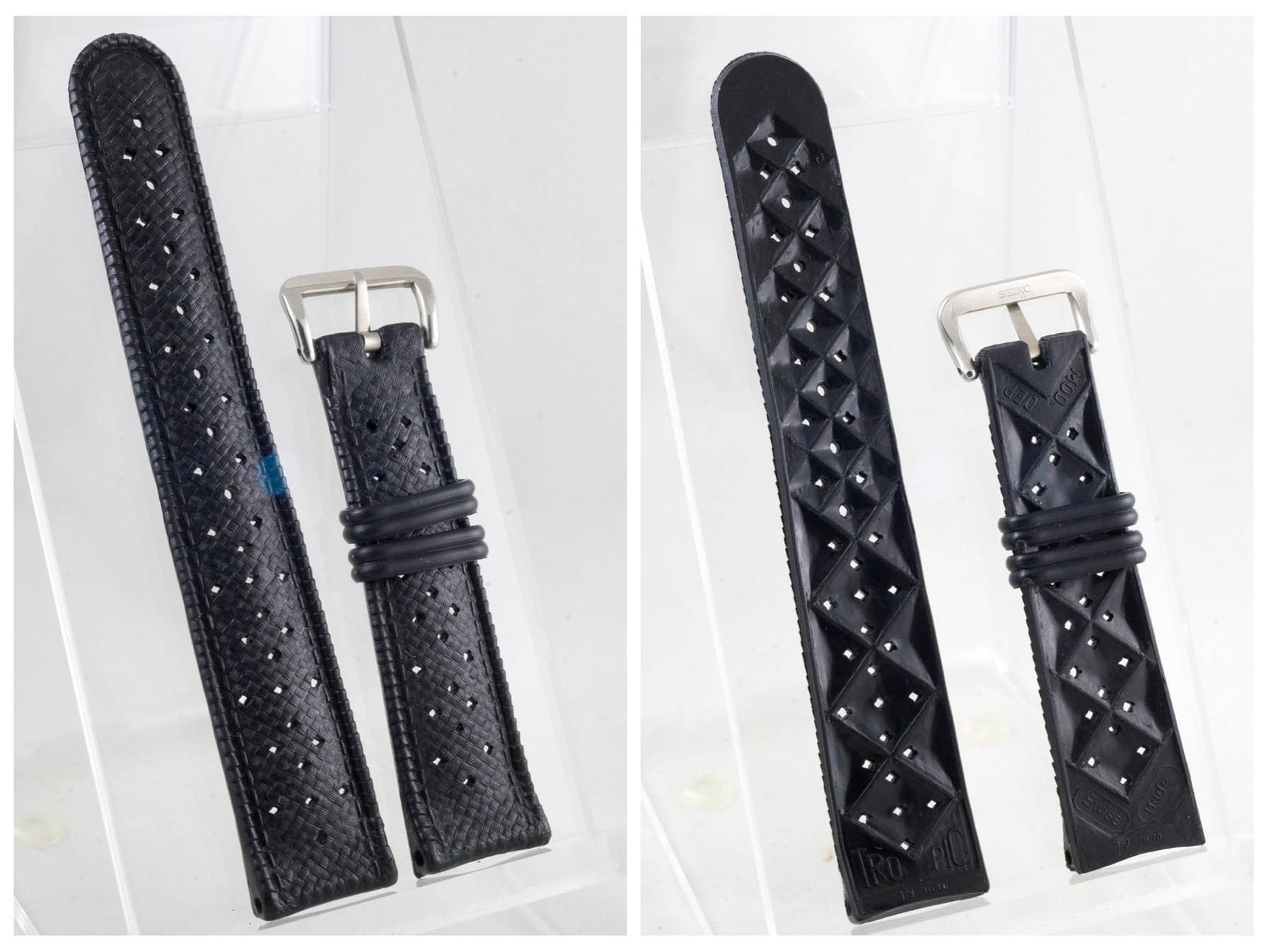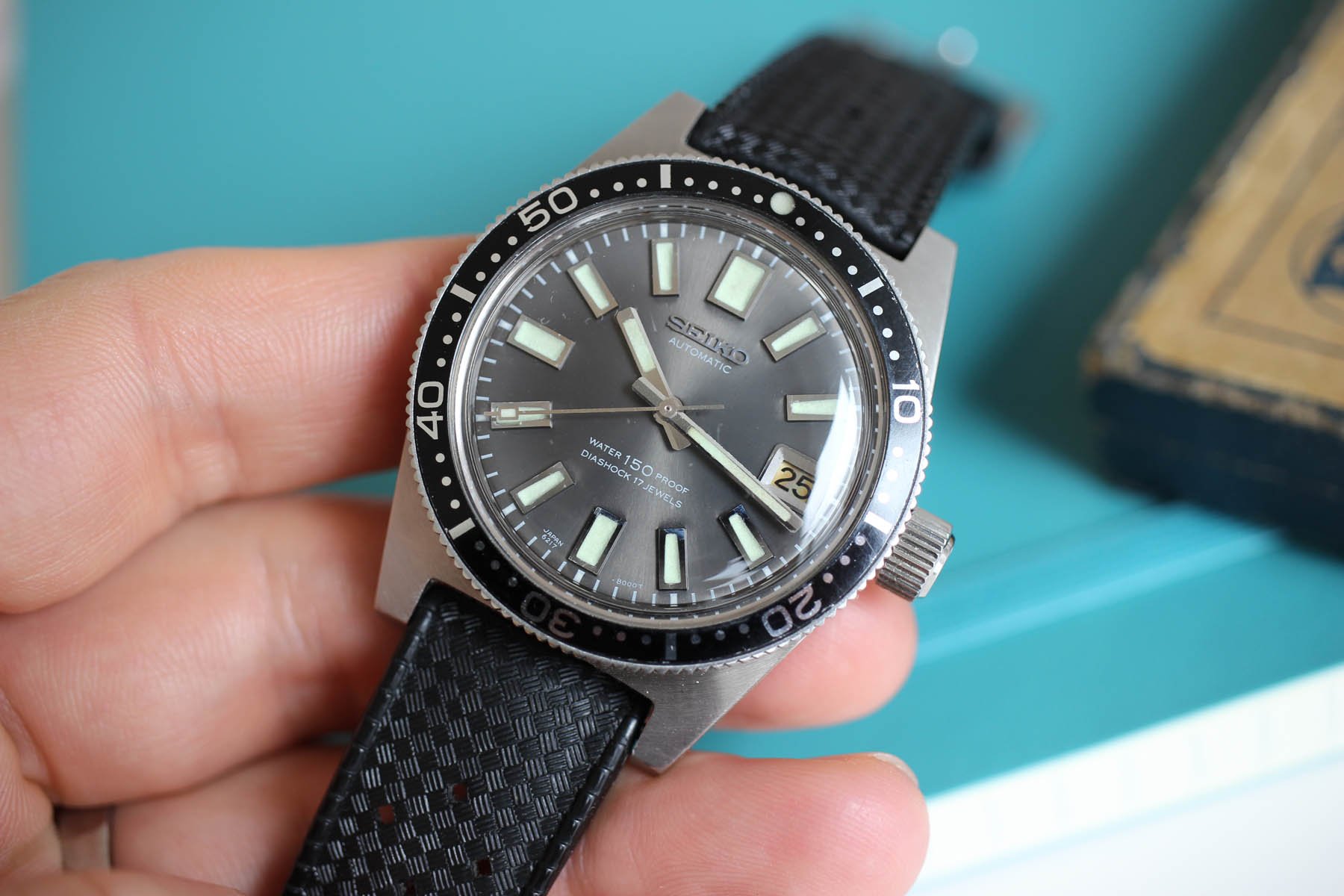#TBT Buying A Seiko 6217-8001 AKA The Big Crown 62MAS
Are all legendary Seiko 6217-8000/8001 “62MAS“ watches the same? Is it just a different size of the crown or are there other details that you should pay attention to when checking out the first professional diver‘s watch from Seiko?
If you ever wondered about the 8000/8001 difference, it is not a country allocation or dial version code. The first four digits represent the movement and the other four stand for the case number. The Seiko 6217-8000 with a small crown was released in April 1965 and lasted for only two months. Blame the small crown that was not the easiest to grip while wearing gloves. It is quite rare today, thanks to its limited production span. Furthermore, it is getting harder and harder to get your hands on a fairly priced Big Crown 62MAS 6217-8001. The ones with a small crown are even more scarce. My personal feeling places the odds 10:1 in favor of the Big Crown, but I don’t have the official data to back this up.
Peculiar Big Crown 62MAS
Understandably, the history and evolution of the 62MAS are not covered as much and not with the same level of detail as, for example, the beloved Omega Moonwatch. If you look for information, you might come to the conclusion that besides the case backs, every 62MAS has the same dial, bezel, crystal, and hands. Well, as it usually goes with vintage watches, if you dig deeper, there is always something to discover. I remember how puzzled I was when I first bumped into a 62MAS with a brownish to sandy yellow lume patina more typical for Omega, and not for an “always green“ Seiko. What was behind this unusual shade of lume?
Big Crown 62MAS from Suwa or Daini?
The Seiko 62MAS was originally made in Suwa and watches coming from this facility developed the well-known “dirty green“ or “Wabi“ patina so typical for vintage Seiko. To boost production capabilities and meet the demand, Daini Seikosha (another factory, not a person) started to manufacture the 62MAS too.
“The first peculiar thing about the Daini 62MAS is the Lumi Brite they used. Being of a different composition than the one used by Suwa, they both aged differently. Suwa’s lume would turn greenish, whereas Daini’s lume would turn creamy or ivory,” explains Seiko expert Arnaud from Ikigai watches.
Long story short: if you would like a 62MAS with a brownish patina and small crown, just forget it. You have to choose. The Daini 62MAS watches were produced only from April to June 1967, and exclusively with “horseshoe“ case backs, DAINI SEIKOSHA engravings on the rotor, and on the inside of the case back. All came with big crowns.
The case back
Speaking of the case backs, the Small Crown 62MAS only existed with a dolphin case back. As Mike already pointed in the article on his Small Crown 6217-8000 that he picked up what seems like ages ago, the etching on the early case back was not deep and used to be naturally polished off after a few years of normal wear. The Big Crown changed the relief production on case backs and in total, we recognize three different case back types.
There is much more to say when it comes to Big Crown 62MAS case backs. I remember how confused I was until I straightened out the timeline in my mind. I didn’t do this elaborate work myself and I once again marvel at the research the watch community has been able to put together. If we take it from the end, the last run or the fourth generation “horseshoe“ case back had no dolphin on it at all. This type came not only from Daini but also from the Suwa production facility.
Mind the dolphin
If you buy the Big Crown 62MAS, other than the later production “horseshoe“ case back you can also find two types of dolphin case backs. Pay some attention to the dolphins, as they are not the same. It might save you from a panic attack if you compare it to your friend‘s 62MAS to find they’re both different.
The first generation dolphin comes with a small crown and you’ll recognize it by hardly being able to spot any dolphin at all. Above are two examples of dolphin case backs that you can find on the Big Crown 62MAS. The etching is much deeper on the right image.
The major difference between the 2nd and 3rd generation dolphin case back is the illustration. The dolphin of the 3rd generation on the right has shorter and more rounded pectoral flippers and a shorter rostrum. Design-wise, I prefer the 2nd generation case back, it’s a bit more vintage and does not feel so childish. Regardless of the design, both are authentic.
Why all this fuss?
Five or six years ago you could pick up a 62MAS for €1,000 in an auction and you got a decent piece given the budget. If you follow the pricing trend today, it’s getting much steeper. We have witnessed European dealers listing the 62MAS for €5,000. More disturbing (or encouraging, if you already have one) is the fact that the watches disappear before newsletter updates from dealers have a chance to reach the majority of their customers. A “Wabi“ dial (one that possesses an extreme and not always appealing patina) is no longer seen as a problem. If I am about to pay 5k for a vintage diver, it pays off to do the homework. Remember the infamous auction with a lot of Seiko watches pimped with aftermarket parts?
Getting a Seiko 62MAS in Japan
To raise the heat I would also add that it’s getting harder to pick up a 62MAS even in Japan. It’s not unusual to see pieces with undocumented history and bad pictures auctioned above €3,500. The recent Seiko SLA017 re-edition didn’t help in bringing the prices down either…
Original strap
When I got my Big Crown 62MAS, I thought it was fitted with the original strap. That was until I read another amazing article from Anthony Kable on his blog. If you are on a quest to get an original Tropic strap, the picture above is the best guidance. “As you can see the tail section of the strap has three rows of three holes. These are separated by a single hole, two holes, and another single hole.” As the strap tapers, three holes become two only. All of these ventilation holes are diamond-shaped. The strap has seven sizing holes and these are all round,“ explains Anthony Kable. I have to say the strap looks amazing and it is really challenging to get one. Great respect to Anthony Kable, who decided to donate his perfect piece to the Seiko Museum.
Unanswered hypothesis
As Mike already pointed out in his article from 2017, there are some differences to the bezels too. If you search through forums and compare tens and hundreds of pictures, you can spot some differences in inserts and coin edges for bezels used on the Small Crown and the Big Crown 62MAS. As these findings are not verified and rather hypothetical, I am not confident enough in sharing them.
If you are interested to learn more, Arnaud’s and James’s blog post makes for an amazing reading. And their dial shots are stunning. To illustrate the extra mile they went, James compared the size of applied Seiko logo fixation holes on both the Big Crown and the Small Crown 62MAS. He did the same with the dial paint job, where the early Small Crown 62MAS come out as the winner.
If you have any supporting facts and findings regarding the Big Crown 62MAS and its history, please feel free to share them with us.

